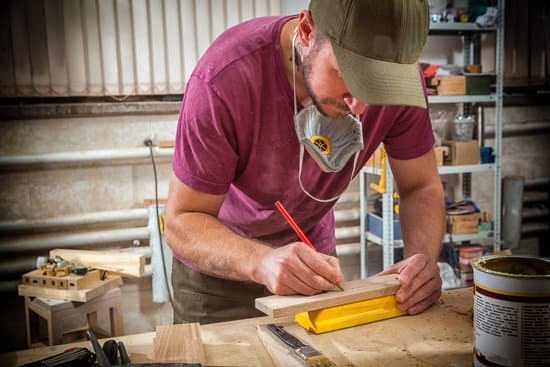Introduction
Metal woodworking clamps are an essential tool for any woodworker. They provide an easy way to secure two pieces of a project together while giving you plenty of room to adjust their size and position. Clamps also help distribute the pressure evenly across your wooden surface, helping to keep it steady and firm when being worked on, or when waiting to be glued together. Metal clamps come in various sizes and types depending on the particular project and what kind of materials you’re using. Different projects might require clamps with different features such as extra length, width, or more headroom for intricate designs. Products like spring-loaded bar clamps make it easy quick clamping action for quicker setups, making all sorts of projects much easier than trying to fumble with nailing or stapling them. Furthermore, metal options are often more rigid than plastic versions which means that they can get into tighter places more easily and provide more secure grip throughout the entire duration of the project. With these advantages combined with their affordability and versatility it is easy to see why metal woodworking clamps have become commonplace among DIYers and professionals alike!
Different Styles of Metal Woodworking Clamps
Metal woodworking clamps are essential tools for keeping wood and other materials running smoothly through a project. They come in several different styles, each with their own unique characteristics and uses. Some of the most common types of metal woodworking clamps include C-clamps, F-clamps, bar clamps, strap clamps, and toggle clamps. C-clamps are typically used for securing materials to a fixed surface. These types of clamps feature adjustable jaws that can open wide enough to accommodate both small and large objects. F-clamps can usually handle heavier pieces of work due to the double slides design which allows for more pressure on the item being held in place. Bar clamps can be adjusted along a bar frame and can come in both straight or curved formats so that you can clamp onto almost any object regardless of its size or shape. Strap clamps use straps made from nylon or leather to grip items quickly and firmly while also allowing plenty of room for adjustments such as sliding bars or tensioners. Lastly, toggle clamps provide an extra level of security by automatically adjusting the strength according to how much pressure is applied to the material being held in place; they are typically used when working with small parts or delicate materials where serious issues like breakage could occur if too much pressure is exerted during clamping operations.
Selecting the Right Metal Woodworking Clamp for Your Projects
When looking for the right metal woodworking clamps to use for your projects, you should consider a number of factors. First and foremost, what type of material do you plan on clamping? This will help you decide which type of clamp would work best for your project. Depending on the material, there could be pull clamps or adjustable metal clamps available to fit your needs.
Next, consider the size and shape of the item that you are trying to clamp together. Many different types of metal clamps are available in various shapes and sizes so that they can hold different materials securely, depending on the task at hand. Careful measurements must be taken while making precise cuts to ensure that when the clamped pieces come together they appear flawless and secure. Some metal woodworking clamps also have grooves in specific areas which allow additional detail in woodworking designs without compromising stability. If planned correctly, this type of feature can take any wooden masterpiece to a level unseen before with today’s knowledge of woodworking tools and techniques.
Finally, assess how much force you’ll need during successful completion of your project as certain metal clamps may not provide enough grip during strenuous cutting activities or if attempting finer details work like intricate carving on furniture pieces or sculptures etcetera. If any misconceptions arise within the process, it is better to research thoroughly and consult professionals so that mistakes do not further complicate matters during application stages. All in all, understanding both craftsmanship requirements along with tool capabilities is key when deciding which one fits our needs best for maximum productivity within a given scope due diligence with careful selection of quality woodclamping choices paves way for a satisfying end product every time!
Advantages of Using Metal Woodworking Clamps
Metal woodworking clamps offer a number of advantages when it comes to the job of clamping your projects together for cutting, gluing, or drilling. Firstly, these clamps are incredibly strong and sturdy, meaning that they won’t bend or break under even the most intense pressure. Their metal construction makes them durable enough to last for years of use without showing any signs of wear and tear. In addition, these clamps feature padded jaws designed to protect the material from being damaged by sharp edges on the metal clamp arms. This means that delicate pieces such as dowels and thin strips can be held securely in place without fear of damaging the wood’s finish. Finally, metal woodworking clamps have a wide range of size options available so you can find one that is perfect for your particular project. This allows you to get the very best fit when joining two pieces together so you are ensured a secure bond every time.
How to Use Metal Woodworking Clamps for Maximum Craftsmanship
Metal woodworking clamps provide the ultimate in handy, long-lasting tools for any woodworking project. The variety of different sized and designed clamps allow you to create precise, accurate cuts and joinery simultaneously, making it easier to work on large or tight spaces. In addition to creating accurate cuts, using metal woodworking clamps ensure maximum craftsmanship in any carpentry project. Here’s how:
1. Use the right clamp for your project – select a size that fits the type of material being placed together and the size of your working space. For example, if you are joining together thin strips of wood that won’t require a strong hold then smaller clamps may suffice; while larger projects will likely require heavier duty options such as C-clamps or toggle clamps.
2. Securely fasten each piece – To get the best results with minimum effort use your metal woodworking clamps properly and make sure all pieces fit snugly together when clamped down. This will reduce slippage when cutting and drilling, resulting in an easier and more precise result than using your hands alone.
3. Double check your measurements before cutting – When using multiple pieces that need to fit perfectly with each other in specific areas of a single project, it’s important to double check your measurements before cutting starts so that everything matches up properly when fit together post-cutting with your metal woodworking clamps’ help ensure accuracy here too; make sure the measurements line up between jointed pieces after securely tightening them into place before proceeding with any drilling or sawing operations .
4. Even pressure – Properly tensioning each clamp helps spread out the pressure evenly so there are no weak points where movement can occur during sawing or sanding operations ” this can ruin painstaking hours of work! Take time to ensure gradual tightening is achieved by regularly re-adjusting where necessary until desired results are acquired.
By following these steps utilizing metal woodworking clamps during any carpentry project will produce unbeatable craftsmanship results every time!
Cleaning and Maintenance Requirements for Metal Woodworking Clamps
The cleaning and maintenance requirements for metal woodworking clamps is relatively minimal. It’s important to regularly clean all surfaces of the clamps to ensure they are free from debris, dust and other particles. This should be done with a damp towel or rag, being sure not to get water into the hinges. Additionally, it’s important to inspect the clamps regularly for any wear, tear or rust and make repairs or replacements as needed. Finally, the handles of the clamp should be treated with a light oil such as WD-40 periodically to prevent corrosion and ensure smooth operation of the handle.
In order to ensure maximum longevity of metal woodworking clamps and keep them functioning as intended in your workbench setup, it is also important to store them in a dry location with sufficient room and proper ventilation. Humidity can cause metal components on these clamps to corrode over time so storing them in an area away from excessive moisture is recommended. Furthermore, heavy objects should not be placed onto the clamp or stored on them either when not in use as this can significantly damage and weaken components on the tool.
Summary
Metal woodworking clamps play an essential role in many woodworking projects. By applying pressure between two pieces of material, they help keep components together while the glue dries or materials are cut or joined together. Metal clamps come in a wide range of sizes and styles. They can be hand tightened with a wing nut, screw nut, or ratchet mechanism, or compressed with a c-clamp for precise alignment.
A woodworker must take special precaution when using metal clamps on fragile materials, as excessive force can cause cracks and fractures more quickly. Additionally, rough edges from sheet metal can mar soft surfaces if proper protection is not taken. Commonly used varieties of metal clamps include bar clamps, strap clamps, toggle clamping systems, webbed straps, trammel heads and jigs, corner holding fixtures and more. Bar clamps are one of the most widely used varieties because they are affordable, deliver a strong hold when needed to join or align materials and can be adjusted easily to fit different workpiece circumferences. Strap clamps feature adjustable ratcheting action that is released when the desired level of pressure has been reached making them ideal for curved surfaces such as furniture hulls or table legs that need to be kept tucked close together during assembly. Toggle clamping systems use toggle arms driven by either nuts or wedges to apply pressure creating an incredibly strong grip when tensioned properly which makes them ideal for tasks which require long periods of uninterrupted clamping time. Webbed straps help evenly distribute force across large areas thanks to their wide pressing surface and are ideal for flat joint connections such as cabinet frames where glue drying time needs to be maximized over several hours. Trammel heads come in all shapes and sizes featuring extendable arms that achieve balanced pressure suited for such jobs where angular measurement is important like corner joints, coping cuts or carvings being created by routers or oscillating tools. Lastly corner-holding fixtures hold two pieces at perfect 90 degree angles through fitting into dado grooves ensuring there’s no unscrewing involved at any point during glue-drying process and also allowing quicker set up times than any other type of fixture out there.

Hi everyone! I’m a woodworker and blogger, and this is my woodworking blog. In my blog, I share tips and tricks for woodworkers of all skill levels, as well as project ideas that you can try yourself.





